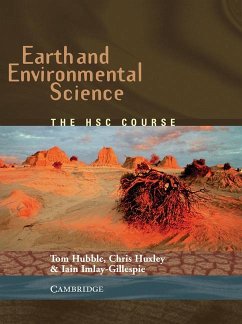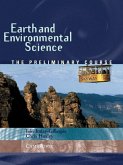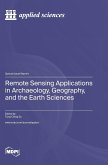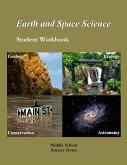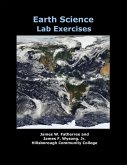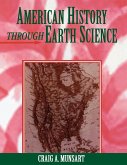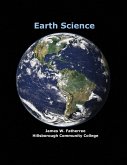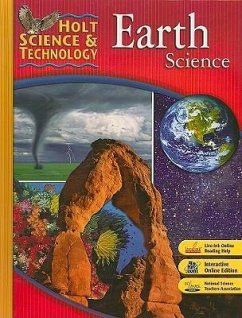- Broschiertes Buch
- Merkliste
- Auf die Merkliste
- Bewerten Bewerten
- Teilen
- Produkt teilen
- Produkterinnerung
- Produkterinnerung
Earth and Environmental Science uses global and Australian contexts to explore interactions between humans and the environments they inhabit. Beautiful in design and practical in layout, students are provided with a comprehensive and thorough understanding of environmental science and human impact.
Andere Kunden interessierten sich auch für
![Earth and Environmental Science Earth and Environmental Science]() Christopher HuxleyEarth and Environmental Science86,99 €
Christopher HuxleyEarth and Environmental Science86,99 €![Remote Sensing Applications in Archaeology, Geography, and the Earth Sciences Remote Sensing Applications in Archaeology, Geography, and the Earth Sciences]() Remote Sensing Applications in Archaeology, Geography, and the Earth Sciences73,99 €
Remote Sensing Applications in Archaeology, Geography, and the Earth Sciences73,99 €![Earth Science Earth Science]() Henry SkirbstEarth Science22,99 €
Henry SkirbstEarth Science22,99 €![Earth Science Lab Exercises Earth Science Lab Exercises]() James W. FatherreeEarth Science Lab Exercises54,99 €
James W. FatherreeEarth Science Lab Exercises54,99 €![American History Through Earth Science American History Through Earth Science]() Craig A. MunsartAmerican History Through Earth Science34,99 €
Craig A. MunsartAmerican History Through Earth Science34,99 €![Earth Science Earth Science]() James W. FatherreeEarth Science55,99 €
James W. FatherreeEarth Science55,99 €![Student Edition 2007: Earth Science Student Edition 2007: Earth Science]() HrwStudent Edition 2007: Earth Science114,99 €
HrwStudent Edition 2007: Earth Science114,99 €-
-
-
Earth and Environmental Science uses global and Australian contexts to explore interactions between humans and the environments they inhabit. Beautiful in design and practical in layout, students are provided with a comprehensive and thorough understanding of environmental science and human impact.
Produktdetails
- Produktdetails
- Verlag: Cambridge University Press
- Seitenzahl: 402
- Erscheinungstermin: 30. Oktober 2002
- Englisch
- Abmessung: 280mm x 216mm x 22mm
- Gewicht: 1007g
- ISBN-13: 9780521016636
- ISBN-10: 0521016630
- Artikelnr.: 42316855
- Herstellerkennzeichnung
- Libri GmbH
- Europaallee 1
- 36244 Bad Hersfeld
- gpsr@libri.de
- Verlag: Cambridge University Press
- Seitenzahl: 402
- Erscheinungstermin: 30. Oktober 2002
- Englisch
- Abmessung: 280mm x 216mm x 22mm
- Gewicht: 1007g
- ISBN-13: 9780521016636
- ISBN-10: 0521016630
- Artikelnr.: 42316855
- Herstellerkennzeichnung
- Libri GmbH
- Europaallee 1
- 36244 Bad Hersfeld
- gpsr@libri.de
Tom Hubble has taught introductory geology as well as specialist engineering and environmental geology courses to science and civil engineering students at the University of Sydney since 1988. He has been an examiner, marker and curriculum developer for the HSC.
Introduction
Acknowledgements
Part I. Tectonic Impacts: 1. Tectonic plates
2. Mountain building
3. How continents evolve
4. Natural disasters and tectonics
5. Climate and tectonics
Part II. Environments through Time: 6. The ages of the Earth
7. Fossils and evolution
8. Important events of the Archaen and Early Proterozoic
9. Important events of the Late Proterozoic and Phanerozoic
10. Life moves into the terrestrial environment
11. Decimation and regeneration of the Earth's life
Part III. Caring for the Country: 12. Weathering and erosion of Australia's land surfaces
13. Salinity of soils and water
14. Pesticides - effects and alternatives
15. Maintaining and protecting surface water
16. The impact of the industrial revolution on the atmosphere and hydrosphere
17. Waste management and mine-site rehabilitation
Part IV. Introduced Species and the Australian Environment: 18. Survey of introduced species in Australia
19. Environmental impacts of introduced species
20. Introduced species case studies
21. Rehabilitating ecosystems damaged by introduced species
22. Modern quarantine methods
Part V. Organic Geology - A Non-Renewable Resource: 23. The properties of fossil fuels
24. Environments and processes of fossil fuel formation
25. Exploration methods for coal and oil
26. The processing and uses of fossil fuels
27. The effects of fossil fuels on the environment
28. The search for alternative sources of energy
Part VI. Mining and the Australian Environment: 29. Why mineral deposits are not all ore deposits
30. Mineral exploration
31. From discovery to export, 6.4 Mining society and the law
32. Mining and the environment
Part VII. Oceanography: 33. Collecting data about the oceans
34. The world's oceans
35. Mass motion of the oceans
36. Life in the oceans
37. Hydrothermal vents and their communities
38. Deep-sea sediments
Resources
Index.
Acknowledgements
Part I. Tectonic Impacts: 1. Tectonic plates
2. Mountain building
3. How continents evolve
4. Natural disasters and tectonics
5. Climate and tectonics
Part II. Environments through Time: 6. The ages of the Earth
7. Fossils and evolution
8. Important events of the Archaen and Early Proterozoic
9. Important events of the Late Proterozoic and Phanerozoic
10. Life moves into the terrestrial environment
11. Decimation and regeneration of the Earth's life
Part III. Caring for the Country: 12. Weathering and erosion of Australia's land surfaces
13. Salinity of soils and water
14. Pesticides - effects and alternatives
15. Maintaining and protecting surface water
16. The impact of the industrial revolution on the atmosphere and hydrosphere
17. Waste management and mine-site rehabilitation
Part IV. Introduced Species and the Australian Environment: 18. Survey of introduced species in Australia
19. Environmental impacts of introduced species
20. Introduced species case studies
21. Rehabilitating ecosystems damaged by introduced species
22. Modern quarantine methods
Part V. Organic Geology - A Non-Renewable Resource: 23. The properties of fossil fuels
24. Environments and processes of fossil fuel formation
25. Exploration methods for coal and oil
26. The processing and uses of fossil fuels
27. The effects of fossil fuels on the environment
28. The search for alternative sources of energy
Part VI. Mining and the Australian Environment: 29. Why mineral deposits are not all ore deposits
30. Mineral exploration
31. From discovery to export, 6.4 Mining society and the law
32. Mining and the environment
Part VII. Oceanography: 33. Collecting data about the oceans
34. The world's oceans
35. Mass motion of the oceans
36. Life in the oceans
37. Hydrothermal vents and their communities
38. Deep-sea sediments
Resources
Index.
Introduction
Acknowledgements
Part I. Tectonic Impacts: 1. Tectonic plates
2. Mountain building
3. How continents evolve
4. Natural disasters and tectonics
5. Climate and tectonics
Part II. Environments through Time: 6. The ages of the Earth
7. Fossils and evolution
8. Important events of the Archaen and Early Proterozoic
9. Important events of the Late Proterozoic and Phanerozoic
10. Life moves into the terrestrial environment
11. Decimation and regeneration of the Earth's life
Part III. Caring for the Country: 12. Weathering and erosion of Australia's land surfaces
13. Salinity of soils and water
14. Pesticides - effects and alternatives
15. Maintaining and protecting surface water
16. The impact of the industrial revolution on the atmosphere and hydrosphere
17. Waste management and mine-site rehabilitation
Part IV. Introduced Species and the Australian Environment: 18. Survey of introduced species in Australia
19. Environmental impacts of introduced species
20. Introduced species case studies
21. Rehabilitating ecosystems damaged by introduced species
22. Modern quarantine methods
Part V. Organic Geology - A Non-Renewable Resource: 23. The properties of fossil fuels
24. Environments and processes of fossil fuel formation
25. Exploration methods for coal and oil
26. The processing and uses of fossil fuels
27. The effects of fossil fuels on the environment
28. The search for alternative sources of energy
Part VI. Mining and the Australian Environment: 29. Why mineral deposits are not all ore deposits
30. Mineral exploration
31. From discovery to export, 6.4 Mining society and the law
32. Mining and the environment
Part VII. Oceanography: 33. Collecting data about the oceans
34. The world's oceans
35. Mass motion of the oceans
36. Life in the oceans
37. Hydrothermal vents and their communities
38. Deep-sea sediments
Resources
Index.
Acknowledgements
Part I. Tectonic Impacts: 1. Tectonic plates
2. Mountain building
3. How continents evolve
4. Natural disasters and tectonics
5. Climate and tectonics
Part II. Environments through Time: 6. The ages of the Earth
7. Fossils and evolution
8. Important events of the Archaen and Early Proterozoic
9. Important events of the Late Proterozoic and Phanerozoic
10. Life moves into the terrestrial environment
11. Decimation and regeneration of the Earth's life
Part III. Caring for the Country: 12. Weathering and erosion of Australia's land surfaces
13. Salinity of soils and water
14. Pesticides - effects and alternatives
15. Maintaining and protecting surface water
16. The impact of the industrial revolution on the atmosphere and hydrosphere
17. Waste management and mine-site rehabilitation
Part IV. Introduced Species and the Australian Environment: 18. Survey of introduced species in Australia
19. Environmental impacts of introduced species
20. Introduced species case studies
21. Rehabilitating ecosystems damaged by introduced species
22. Modern quarantine methods
Part V. Organic Geology - A Non-Renewable Resource: 23. The properties of fossil fuels
24. Environments and processes of fossil fuel formation
25. Exploration methods for coal and oil
26. The processing and uses of fossil fuels
27. The effects of fossil fuels on the environment
28. The search for alternative sources of energy
Part VI. Mining and the Australian Environment: 29. Why mineral deposits are not all ore deposits
30. Mineral exploration
31. From discovery to export, 6.4 Mining society and the law
32. Mining and the environment
Part VII. Oceanography: 33. Collecting data about the oceans
34. The world's oceans
35. Mass motion of the oceans
36. Life in the oceans
37. Hydrothermal vents and their communities
38. Deep-sea sediments
Resources
Index.

